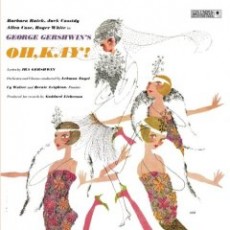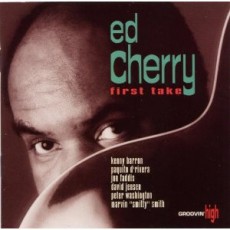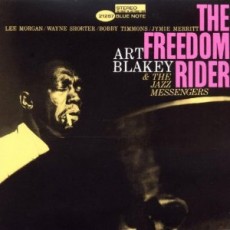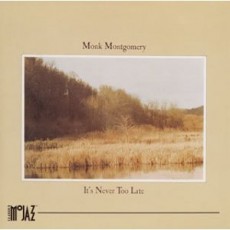
From Broadway To 52nd Street
On November 8, 1926 The Imperial hosted the opening night of this new musical “Oh Kay!” starring Gertrude Lawrence, Oscar Shaw and the Fairbanks twins. The show ran for 256 performances and with the assistance of George and Ira Gershwin gave the world a Broadway melody destined to become a jazz standard – Someone To Watch Over Me.
The Story: It is 1926, the Jazz Age and the era of Prohibition. Jimmy Winter is very popular among the young ladies, and in the imaginary town of Beachampton, they are cleaning the living room of his Long Island, New York estate, declaring that “The Woman’s Touch” is exactly what his home needs. Jimmy Winter spends so little time on his Long Island estate, Kay Denham, posing as a cook, helps her rum-running brother, a titled English bootlegger, cache his illegal booze there. When Jimmy returns unexpectedly to get married, he falls in love with Kay. As a result, he helps Kay outmaneuver revenue agents and after renouncing his numerous other promises of marriage, agrees to marry Kay.
Jazz History: West 52nd Street is best known as the “Street of Jazz” or “The Street That Never Sleeps”. It ran east to west from 5th to 6th Avenues and was renowned in its heyday during and after Prohibition from 1925 to 1960. 52nd Street hosted such celebrated establishments as the Hickory House, Jimmy Ryan’s, the Famous Door, the Iron Gate, Leon & Eddie, 21, Tony’s, The Onyx, The Three Deuces, Downbeat, The Yacht Club, The Wing Club and Kelly’s Stable.
From 1935 to 1945 this monochrome of five story brownstone buildings in whose drab and cramped street level interiors – once known as English basements – flourished as speakeasies and jazz clubs and by 1936 it became also known as “Swing Street” and served as the launching pad for more singers, more hit songs and more instrumentalists than Chicago, New Orleans, Memphis or Los Angeles.
Sponsored By
www.whatissuitetabu.com
More Posts: broadway

Daily Dose Of Jazz…
Johnny Lytle was born John Dillard Lytle on October 13, 1932 in Springfield, Ohio, the son of a trumpeter father and an organist mother. He began playing the drums and piano at an early age. Before studying music in earnest, he was a boxer and was a successful Golden Gloves champion. During the late ’50s, Lytle continued to box, but landed jobs as a drummer for Ray Charles, Jimmy Witherspoon and Gene Ammons.
Switching from drums to vibraphone Johnny toured with organist Hiram “Boots” Johnson in 1955 and then formed his first group in 1957 with saxophonist Boots Johnson, organist Milton Harris and drummer William “Peppy” Hinnant. He so impressed Grammy winning producer Orrin Keepnews who signed him to his Jazzland label in 1960.
Known for his great hand speed and showmanship, Lytle was also a songwriter, penning many of his own hits, including “The Loop,” “The Man,” “Lela,” “Selim” (honoring Miles Davis), and the jazz classic “The Village Caller”. He recorded more than 30 albums for various jazz labels including Tuba, Jazzland, Solid State and Muse. Throughout his career he performed and recorded with a host of jazz greats including Louis Armstrong, Lionel Hampton, Miles Davis, Nancy Wilson, Bobby Timmons and Roy Ayers.
Johnny never recorded with any of the major record labels fearing loss of control of his music and creative development, thus never gaining the status of a jazz icon like some of his peers, but finding success early in his career with chart-topping albums like A Groove, The Loop, and Moonchild. Nicknamed “Fast Hands,” he always kept an audience’s attention, was popular on the jazz circuit and built a respectable catalog of music with recordings in the ’70s,’80s and ’90s. Johnny toured throughout the U.S. and Europe, with his last performance one month before his passing on December 15, 1995 in his hometown of Springfield. The street where the vibraphonist and drummer used to live was renamed Johnny Lytle Avenue in his honor.
More Posts: drums,vibraphone

Daily Dose Of Jazz…
Ed Cherry was born on October 12, 1954 in New Haven, Connecticut. Learning to play guitar as a child by the time he moved to New York in 1978 he was playing with Dizzy Gillespie. This relationship lasted until 1992, performing in Gillespie’s quartet, big band and with The United Nation Orchestra, which recorded the Grammy Award-winning “Live at Royal Festival Hall”.
In 1993 Cherry released his first recording as a leader, “First Take” as well as performing with Paquito D’ Rivera’s small group and recording “Havana Cafe”. He worked with composer/saxophonist Henry Threadgill for two years with the group “Very Very Circus”, and released his second project as a solo artist titled “A Second Look”. During that same period worked with Hammond B3 organist John Patton recording 3 critically acclaimed sessions.
From 1997 to 1998, Ed worked in Roy Hargrove’s “Crisol” Latin jazz band, which performed in Havana, Cuba, worked with baritone saxophonist Hamiett Bluiett, and toured Europe in 2001 with his own group. He has performed at numerous festivals around the world, backs vocalist Paula West, leads his own trio, has been an educator at Essex Community College, the Henry Street Settlement in New York City, Montclair State University and currently at the Jazzmobile. He continues to perform and record.
More Posts: guitar

Daily Dose Of Jazz…
Art Blakey was born Arthur Blakey on October 11, 1919 in Pittsburgh, Pennsylvania. By the time he was a teenager, he was playing the piano full-time, leading a commercial band. Shortly afterwards, he taught himself to play the drums in the aggressive swing style of Chick Webb, Sid Catlett and Ray Bauduc. He joined Mary Lou Williams in 1942, then toured with the Fletcher Henderson Orchestra, spent three years with Billy Eckstine’s big band and became associated with the bebop movement along with his fellow band members Miles Davis, Dexter Gordon, Fats Navarro and others.
He recorded on Thelonious Monk’s first and last sessions as a leader, organized a rehearsal band called the Seventeen Messengers in 1947, recorded with an octet call the Jazz Messengers co-led with Horace Silver, and the group recorded with Clifford Brown and Lou Donaldson live at Birdland and formed a regular cooperative group with Hank Mobley and Kenny Dorham in 1953.
Along with Kenny Clarke and Max Roach, Art was one of the inventors of the modern bebop style of drumming. Known as a powerful musician and a vital groover, his brand of bluesy, funky hard bop was and continues to be profoundly influential on mainstream jazz. For more than 30 years his band, Art Blakey and the Jazz Messengers, included many young musicians who went on to become prominent names in jazz.
Blakey’s Messengers would go on to enlist musicians like Doug Watkins, Donald Byrd, Johnny Griffin, Benny Golson, Jymie Merritt, Lee Morgan, Bobby Timmons, Curtis Fuller, Freddie Hubbard, Cedar Walton and Wayne Shorter, all of whom made an indelible impression on Blakey’s repertoire with their original compositions such as Dat Dere, Moanin’ and Lester Left Town.
Art recorded dozens of albums both as a sideman and a leader with a constantly changing group of Jazz Messengers, toured with the Giants of Jazz in early Seventies, revitalized the band in the 80s with players like Wynton Marsalis, Johnny O’Neal, Philip Harper, Terence Blanchard, Joanne Brackeen, Donald Harrison, Kenny Garrett, Bobby Broom, Robin Eubanks, Ralph Peterson, Jr. and Mulgrew Miller.
Also known as Abdullah Ibn Buhaina after converting to Islam and nicknamed “Bu”, was inducted into the Jazz Hall of Fame in 1982, won a Grammy for Best Group Jazz Instrumental Performance for New York Scene, was inducted in the Newport Jazz Festival and Down Beat Jazz Hall of Fames, and was posthumously inducted into the Grammy Hall of Fame in 2001 and was awarded the Grammy Lifetime Achievement Award in 2005. Drummer and bandleader Art Blakey died on October 16, 1990.
More Posts: drums

Daily Dose Of Jazz…
Monk Montgomery was born William Howard Montgomery on October 10, 1921 in Indianapolis, Indiana the older brother of Wes and Buddy. A student of the double bass, his professional career did not start until age 30, after Wes’ career began, and from 1951 to 1953 he worked in Lionel Hampton’s Orchestra.
Following that stint Monk worked with his brothers and Alonzo Johnson in the Montgomery Johnson Quintet. He would go on to record with his brothers as the Montgomery Brothers, releasing a number of albums together. 1955 saw him moving to Seattle, Washington to form the Mastersounds from 1957–1960. From 1966–1970, he freelanced with Cal Tjader, settled in Las Vegas, Nevada and continued to play with the Red Norvo Trio and worked with Kenny Burrell, Art Farmer and Eddie Harris among others.
In his final years he founded and was active in the Las Vegas Jazz Society and was planning a world jazz festival. He is perhaps the first electric bassist of significance to jazz, introducing in 1951 the Fender Precision Bass to the genre. Bassist Monk Montgomery died of cancer in Las Vegas on May 20, 1982.
More Posts: electric bass






